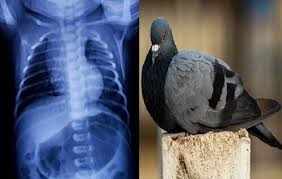Ulaanbaatar, November 21 (IANS). The air quality in Mongolia’s capital Ulaanbaatar is deteriorating due to fuel (oil) based heaters lit by people to escape the cold. This time it is unusually cold here.
According to air quality index (AQI) data as of 10 am local time on Thursday, PM 2.5 levels in the city’s outer Ger district exceeded 500 micrograms per cubic meter, while around the capital, Xinhua news agency reported. The level was recorded at 200 micrograms per cubic metre, which is much higher than the safety limits set by the World Health Organisation.
The country’s health experts have warned that PM 2.5 particles, which have a diameter of 2.5 microns or less, can penetrate deep into the human respiratory tract, reach the lungs and enter the bloodstream.
Air pollution has long been a major problem in Ulaanbaatar. About half of Mongolia’s population of 35 lakh lives here. More than half of the capital’s population lives in the surrounding areas. Where infrastructure such as water supply, heating and sewage systems are in poor condition.
To stay warm and cook during winter, local people depend on fuel and other flammable materials. Because of this the air pollution of the city increases.
Earlier, since the early 2000s, the Mongolian government, in collaboration with international organizations, had taken several measures to deal with air pollution. These measures also included using better fuel instead of raw coal. However, these efforts have not yet resulted in any significant improvement in Ulaanbaatar’s air quality.
It should be noted that there is a lot of continental influence in the climate of Mongolia. Here the winter season is long and the summer season is short. Temperatures often drop to minus 25 degrees Celsius during winter in Ulaanbaatar.
–IANS
PSM/AKJ


